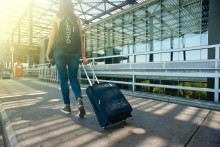Today’s students might be surprised to learn that Dutch higher education hasn’t always been divided into Bachelor’s and Master’s programmes. In 1999, a group of European countries decided to jointly standardise their higher education systems. Three years later, this led to the introduction of the Bachelor’s-Master’s system in the Netherlands.
The new system offered a large number of advantages: suddenly, it became much easier for students to go from a Bachelor’s in communication studies to a Master’s in economics, study abroad in Aarhus, Berlin or Hong Kong, or gain a couple of years of work experience between their Bachelor’s and Master’s. The ‘Ba-Ma’ system was going to bring about a brave new world.
Significant differences
But are students actually making use of the possibilities offered by the current system? That’s the question the CPB sought to answer in the study it conducted at the request of the Ministry of Education, Culture and Science. The good news: students have become more flexible in what they study and where they choose to do so.
Shortly after the introduction of the Ba-Ma system, more than 20 percent of Dutch students opted for a Master’s degree in a field that was not directly related to their Bachelor’s, the CPB writes. In recent years, this group has grown to over 35 percent.
However, there are significant differences between disciplines. Bachelor’s students in healthcare and law, for example, are much less likely to choose a different field of study for their Master’s: only 1 in 10 make a switch. Students in economics, linguistics and cultural studies, on the other hand, are much more flexible, with more than half opting for a Master’s degree in another discipline.
Switching universities
Moreover, students are now less likely to stay at the university where they completed their undergraduate studies. In 2005, about 1 in 15 students transferred to a different university for their Master’s degree. According to the CPB, this number has grown to 1 in 5 in recent years.
For those making a switch, the Randstad is clearly the place to be: the vast majority of them end up in this conurbation, regardless of where they completed their Bachelor’s.
Infancy
But taking a couple of years off from studying to gain work experience between your Bachelor’s and Master’s remains a rare choice, as it appears that the concept of lifelong learning is still in its infancy. In 2017, only 6 percent of Dutch people in their thirties were enrolled in higher education. Among 40- to 64-year-olds, that percentage was only 2 percent.
More and more students are taking a gap year after their Bachelor’s, however, and the number of students who work, go abroad or spend time at home before starting their Master’s degree has risen sharply in recent years: from 1 in 10 in 2005 to over a quarter in 2018. It remains to be seen how the coronavirus pandemic will affect this trend.







